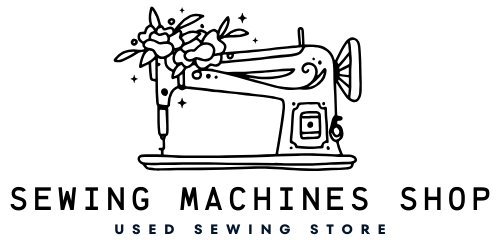
Introduction
When shopping for a sewing machine, one of the first questions you might ask yourself is: “How much should I spend?” With prices ranging from under $100 to several thousand dollars, it’s easy to wonder how much the price tag affects performance. Is it worth splurging on a high-end machine, or can a budget-friendly option meet your needs? In this article, we’ll delve into the relationship between the price of a sewing machine and its performance, breaking down what you can expect at different price points. By the end, you’ll be better equipped to decide which machine fits both your budget and your sewing ambitions.
Breaking Down Sewing Machine Price Categories
Entry-Level (Under $150)
Entry-level sewing machines are designed for beginners or those who sew occasionally. These machines typically focus on simplicity, offering basic stitches, straightforward controls, and a lightweight design. While they may lack the advanced features of pricier models, they can be sufficient for simple sewing tasks like hemming, mending, and crafting.
Mid-Range ($150 – $500)
In the mid-range category, you start to see a significant improvement in both features and performance. These machines often come with a wider variety of stitches, automatic functions, and a more durable build. They are ideal for hobbyists who sew regularly and want more versatility without breaking the bank.
High-End (Above $500)
High-end sewing machines cater to advanced sewists, professionals, and enthusiasts who demand precision, durability, and a range of specialized features. These machines are built to handle complex projects, heavy fabrics, and continuous use. They often include computerized settings, extensive stitch libraries, and additional capabilities like embroidery or quilting.
Performance Expectations Based on Price
Stitch Variety and Quality
As the price of a sewing machine increases, so does the variety and quality of stitches it can produce. Entry-level machines might offer a handful of basic stitches, while mid-range and high-end models can provide dozens, including decorative and specialty stitches. High-end machines typically deliver cleaner, more consistent stitching, even on difficult fabrics.
Durability and Longevity
Durability is another area where price plays a crucial role. Cheaper machines often use more plastic components, which can wear out faster over time. Higher-end models usually feature metal parts and more robust construction, ensuring they stand up to years of regular use. If you plan on sewing frequently or tackling larger projects, investing in a more durable machine could save you from future frustration.
Motor Power and Speed
The motor is the heart of any sewing machine, and its power and speed can vary widely depending on the price. Entry-level machines may struggle with thick fabrics or multiple layers, while mid-range and high-end machines often have stronger motors that can handle a wider range of materials. Faster stitching speeds can also make a difference for sewists working on larger or more complex projects.
The Impact of Price on Features

Basic vs. Advanced Features
As you move up the price scale, you’ll notice a shift from basic to more advanced features. Entry-level machines usually offer manual adjustments and a limited number of functions. In contrast, mid-range and high-end machines may include features like automatic thread cutting, needle up/down positioning, and advanced tension control.
Automation and Computerization
Automation and computerization are game-changers in the sewing world, and they often come with a higher price tag. Computerized sewing machines can automate many tasks, from selecting stitches to adjusting tension and speed. This can be particularly helpful for complex projects or sewists who want to save time and effort.
Special Functions: Embroidery, Quilting, and More
Special functions, such as embroidery or quilting capabilities, are usually found in higher-priced machines. These features allow sewists to explore more creative possibilities, but they also add to the cost. If you’re looking to expand your sewing skills beyond basic garment construction, a machine with specialized functions might be worth the investment.
Material and Build Quality vs. Price
Plastic vs. Metal Components
The materials used in a sewing machine can significantly impact its performance and longevity. Lower-priced machines often use plastic components, which can be less durable and prone to wear. In contrast, more expensive machines tend to feature metal parts, providing better stability and durability. This is especially important for sewists who use their machines regularly or work with heavier fabrics.
The Importance of Internal Mechanisms
Beyond the external materials, the internal mechanisms of a sewing machine also play a crucial role in its performance. Higher-end machines typically have more precise and reliable mechanisms, ensuring smoother operation and fewer issues over time. These internal differences may not be immediately visible, but they can greatly impact your overall sewing experience.
When Paying More is Worth It
Professional Sewists and High-Volume Users
For professional sewists or those who sew frequently, investing in a higher-priced machine can be well worth it. These machines are designed to withstand heavy use, offer more consistent performance, and include features that can streamline your workflow. If sewing is a major part of your life or livelihood, the added expense can pay off in the long run.
Complex Projects Requiring Precision
If you’re tackling complex projects that require precision, such as detailed garment construction, quilting, or embroidery, a high-end machine can make all the difference. The advanced features and superior performance of these machines can help you achieve professional-level results, even on intricate designs.
Investing in a Long-Term Sewing Machine
Sometimes, it’s worth paying more for a machine that will last for years, if not decades. High-end sewing machines are often built to be long-term investments, with sturdy construction and reliable performance that can stand the test of time. If you plan on sewing for the foreseeable future, it may be worth spending more upfront to avoid needing to replace or upgrade your machine down the line.
When a Lower-Priced Machine Will Suffice

Casual Sewing and Simple Projects
If your sewing needs are relatively simple—such as hemming, mending, or creating basic garments—a lower-priced machine may be perfectly adequate. These machines can handle straightforward tasks without the need for advanced features or heavy-duty construction.
Beginners Testing the Waters
For beginners who are just dipping their toes into the world of sewing, starting with a lower-priced machine can be a smart move. It allows you to learn the basics and determine if sewing is a hobby you want to pursue long-term, without making a significant financial commitment upfront.
Secondary or Travel Machines
Even experienced sewists may find value in owning a lower-priced machine as a secondary or travel option. These machines are often lightweight and portable, making them convenient for classes, workshops, or sewing on the go. They may not have all the features of your primary machine, but they can be handy in specific situations.
Comparing Cost vs. Performance in Popular Brands
Brother Sewing Machines: Balancing Cost and Features
Brother sewing machines are known for offering a good balance between cost and features. They have a wide range of models that cater to different price points, making it easier to find a machine that fits your budget without sacrificing too much in terms of performance.
Janome Sewing Machines: Premium Features at a Premium Price
Janome is a brand that tends to focus on higher-end machines, with a strong emphasis on durability, precision, and advanced features. While their machines often come with a premium price tag, many sewists find the investment
worthwhile for the superior performance and longevity they offer.
Singer Sewing Machines: Affordable, Yet Reliable
Singer has long been a go-to brand for affordable sewing machines that don’t skimp on reliability. While they offer models at various price points, their lower-priced options are particularly popular for beginners and casual sewists who want a dependable machine without breaking the bank.
Making an Informed Decision Based on Your Needs

Assessing Your Budget and Expectations
Before purchasing a sewing machine, it’s important to assess both your budget and your expectations. Consider how often you’ll be using the machine, what types of projects you’ll be working on, and how much you’re willing to invest. A well-chosen machine can be a valuable tool for years to come.
Reading Reviews and User Experiences
Reading reviews and user experiences can provide valuable insights into how different machines perform in real-world situations. Pay attention to feedback from sewists with similar needs and preferences to get a sense of whether a particular model is right for you.
Try Before You Buy: Testing Machines In-Store
Whenever possible, try to test sewing machines in-store before making a purchase. This allows you to get a feel for how the machine operates, whether it meets your needs, and if you’re comfortable using it. Testing machines in person can also help you avoid buyer’s remorse.
Conclusion
Choosing the right sewing machine involves finding the right balance between price and performance. While spending more can often get you advanced features, better build quality, and improved durability, it’s not always necessary for everyone. Whether you’re a beginner or a professional, understanding how price affects performance can help you make an informed decision that suits your sewing journey.
FAQs
1. Is it worth investing in a high-end sewing machine if I only sew occasionally?
If you sew occasionally, a high-end machine might be more than you need. A mid-range or entry-level machine can often meet your needs without the extra expense.
2. How does motor power impact sewing performance?
Motor power affects a machine’s ability to handle thick fabrics and multiple layers. Higher-powered motors are usually found in more expensive machines and can provide better performance for heavy-duty tasks.
3. Are expensive sewing machines more durable?
Yes, expensive sewing machines typically use higher-quality materials and components, making them more durable and longer-lasting than cheaper models.
4. Can I get professional-quality stitches on a low-cost machine?
While low-cost machines can produce good stitches for basic projects, professional-quality stitches often require the precision and stability of a higher-end machine.
5. Do more expensive sewing machines require less maintenance?
Not necessarily. All sewing machines require regular maintenance to perform well, but higher-end machines may have more advanced features that make maintenance tasks easier or automated.
Visit our Sewing Machine Shop for the best sewing machine deals.
For more insightful articles, visit our Medium page !

